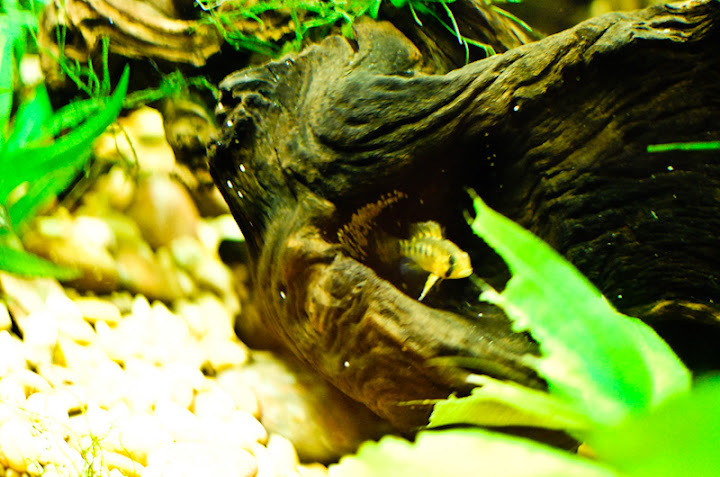Hi,
I'm new to apistos and fish keeping in general.
A bit of background... I've had my 37 gallon tank for a few months now. It has some tetras, some catfish, a couple of female bettas, an angel fish, a severum and a keyhole cichlid. I've had a male macmasteri in the tank for about a month. He has been doing really well but I haven't been able to get a female for him. Last weekend I decided to pick up a male and female pair of eunotus for the tank. They didn't get along very well with the macmasteri, so today I decided to trade the macmasteri in for another female eunotus. I was pretty attached to the little guy, but I decided that this was for the best.
Here's a picture of the tank, all the plants are live:
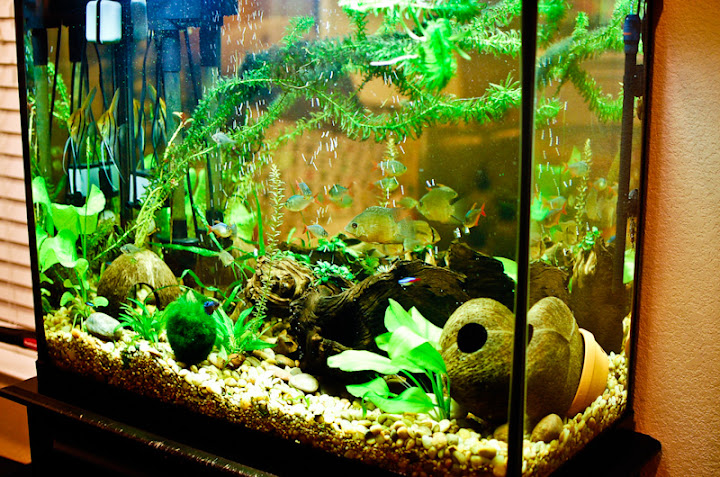
I've been lurking around the forum for a while now, been reading it whenever I was curious about something or had questions. I guess I've just reached a point where I've had too many questions, and I decided to post something.
First, our local fish store labled these as eunotus. Are they? Is there anyway to tell whether they are wild caught? Any advice about how to keep them healthy and happy would be appreciated.
Here're some pictures and more questions
The male:
That little bit of purple/red coloring near his tail, is that normal? or is that like a bruise? (I know it's kind of hard to see from this picture...)
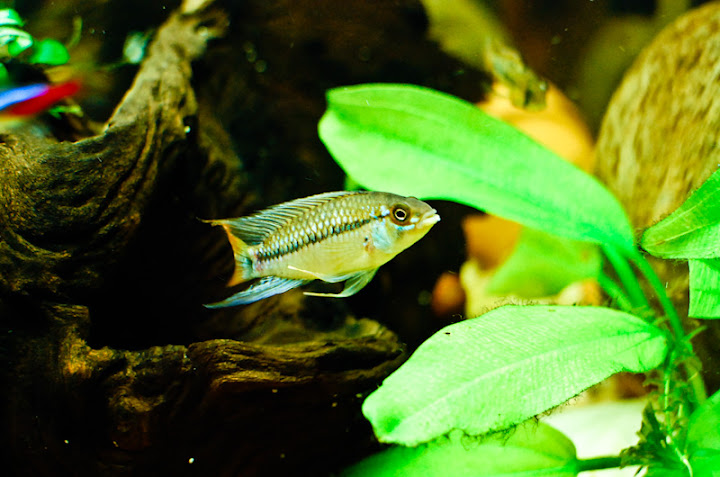
His lip is slightly bigger on one side, is that a birth defect? or is it a wound? (It might be kind of hard to tell from this picture as well..., I think it was more pronounced when we first got him, so I am hoping it will heal up.)
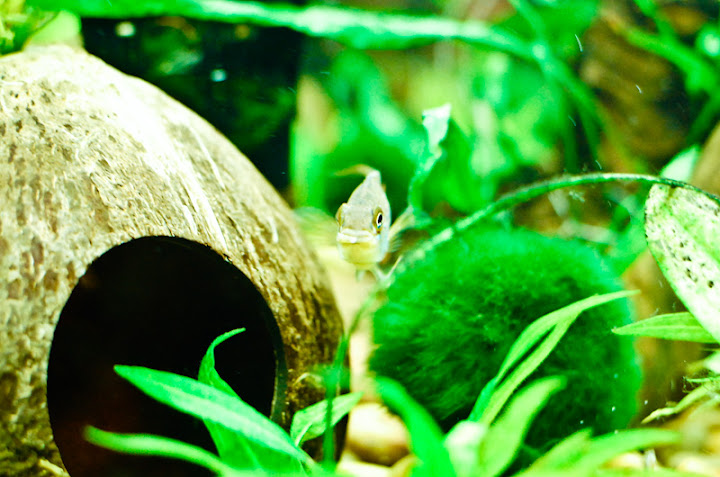
The females, are they females for sure?
The 1st female, she seems to be pretty healthy. She was introduced into the tank with the male and they are getting along pretty well.
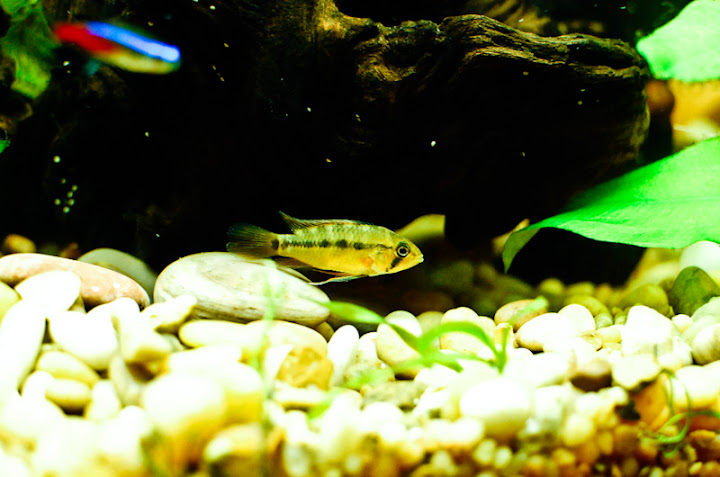
The 2nd female, she was introduced today. She seems kind of stressed out, and the 1st female is slightly bigger and will chase her around occasionally.
Sometimes her coloring is darker, like this. I am hoping that this just means she is stressed out? She is eating fine. She's swimming around the tank and picking at things. And when I put black worms in the tank she ate some of that also.
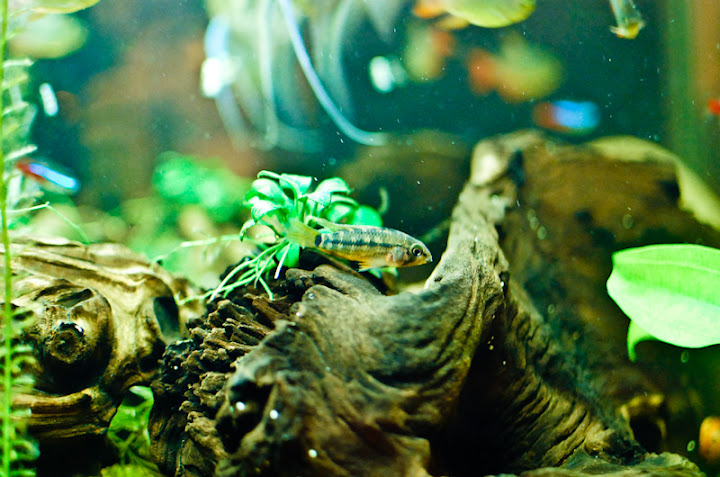
Also, there are some tiny black dots on one side of her. Is this normal? or does she have something bad? here's a picture:
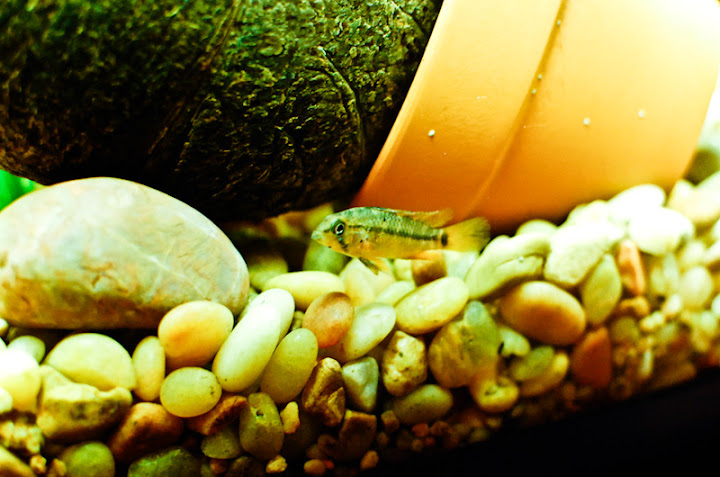
Thanks for reading. I'd appreciate any information you might have!
I'd appreciate any information you might have!
- Raven
I'm new to apistos and fish keeping in general.
A bit of background... I've had my 37 gallon tank for a few months now. It has some tetras, some catfish, a couple of female bettas, an angel fish, a severum and a keyhole cichlid. I've had a male macmasteri in the tank for about a month. He has been doing really well but I haven't been able to get a female for him. Last weekend I decided to pick up a male and female pair of eunotus for the tank. They didn't get along very well with the macmasteri, so today I decided to trade the macmasteri in for another female eunotus. I was pretty attached to the little guy, but I decided that this was for the best.
Here's a picture of the tank, all the plants are live:

I've been lurking around the forum for a while now, been reading it whenever I was curious about something or had questions. I guess I've just reached a point where I've had too many questions, and I decided to post something.
First, our local fish store labled these as eunotus. Are they? Is there anyway to tell whether they are wild caught? Any advice about how to keep them healthy and happy would be appreciated.
Here're some pictures and more questions
The male:
That little bit of purple/red coloring near his tail, is that normal? or is that like a bruise? (I know it's kind of hard to see from this picture...)

His lip is slightly bigger on one side, is that a birth defect? or is it a wound? (It might be kind of hard to tell from this picture as well..., I think it was more pronounced when we first got him, so I am hoping it will heal up.)

The females, are they females for sure?
The 1st female, she seems to be pretty healthy. She was introduced into the tank with the male and they are getting along pretty well.

The 2nd female, she was introduced today. She seems kind of stressed out, and the 1st female is slightly bigger and will chase her around occasionally.
Sometimes her coloring is darker, like this. I am hoping that this just means she is stressed out? She is eating fine. She's swimming around the tank and picking at things. And when I put black worms in the tank she ate some of that also.

Also, there are some tiny black dots on one side of her. Is this normal? or does she have something bad? here's a picture:

Thanks for reading.
- Raven
